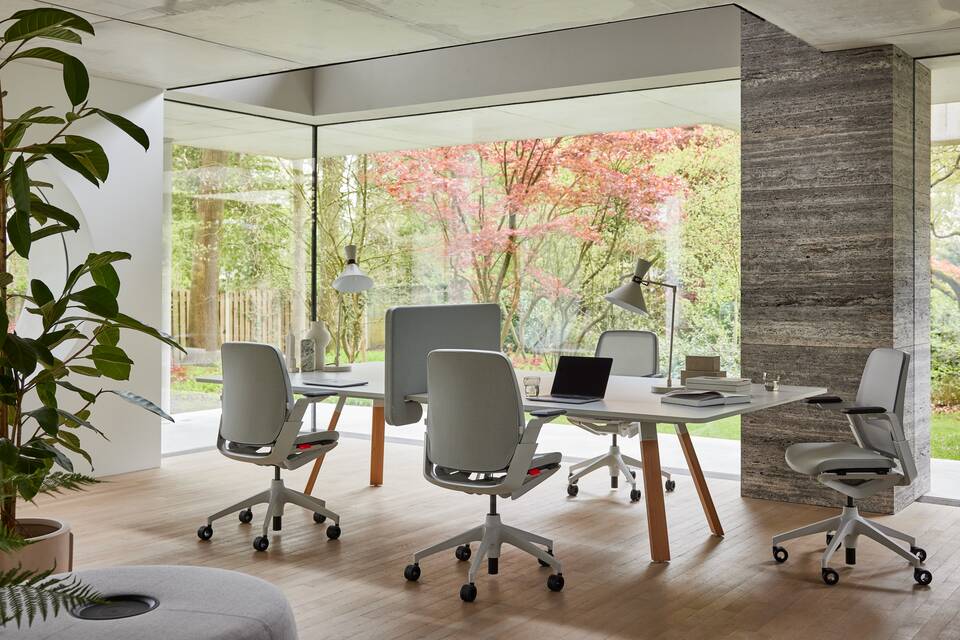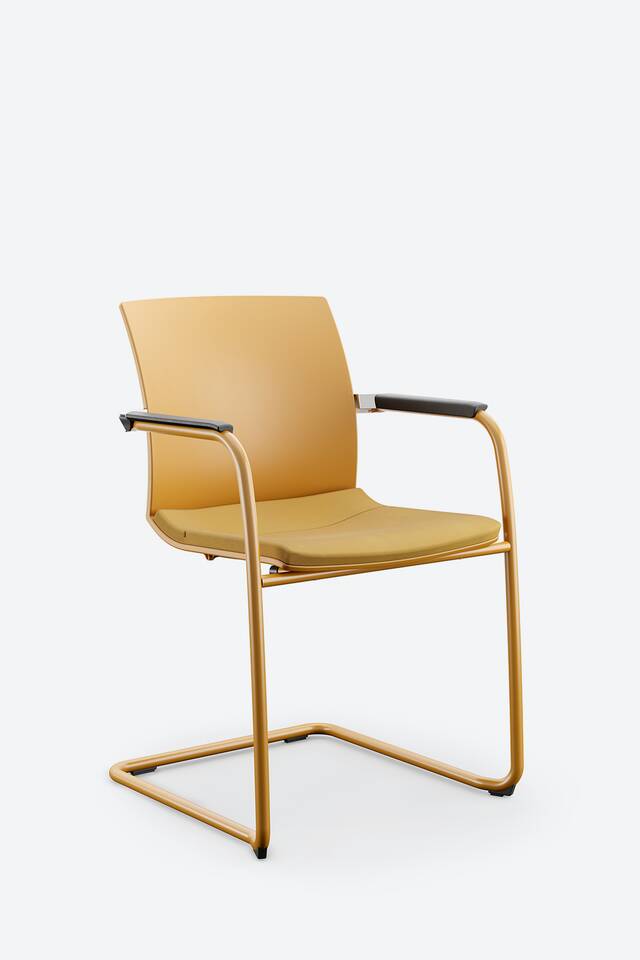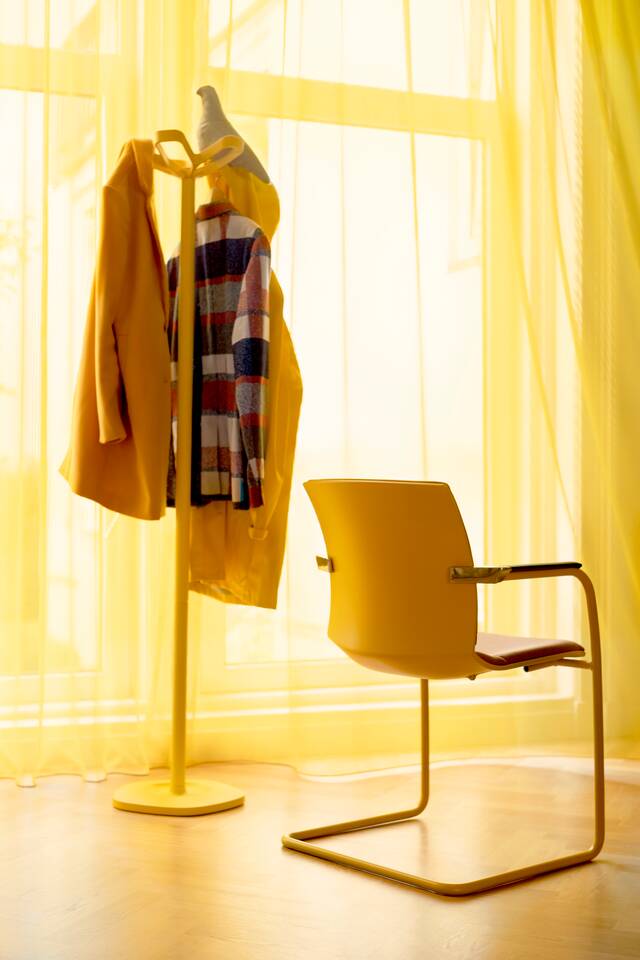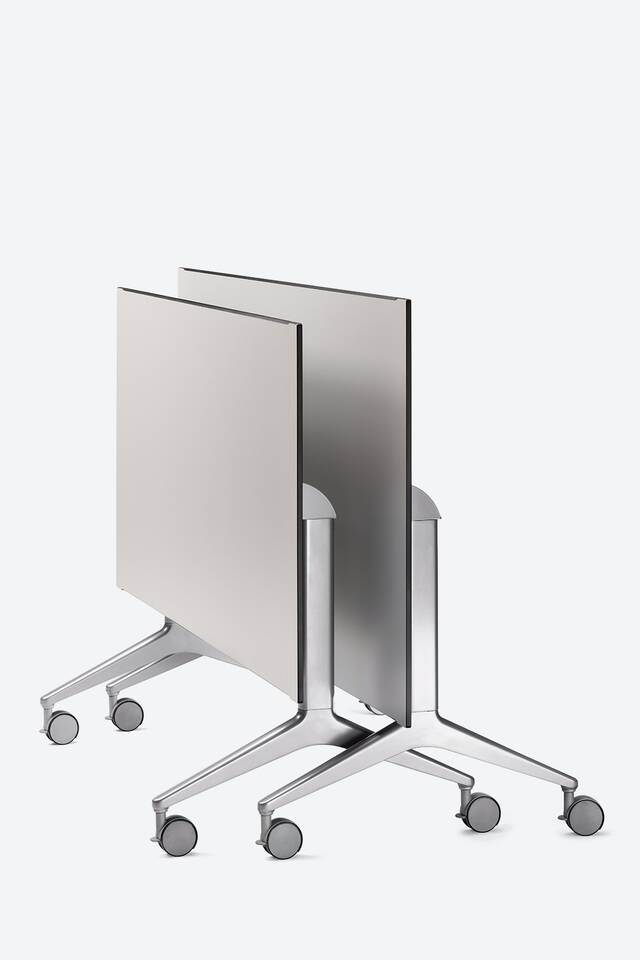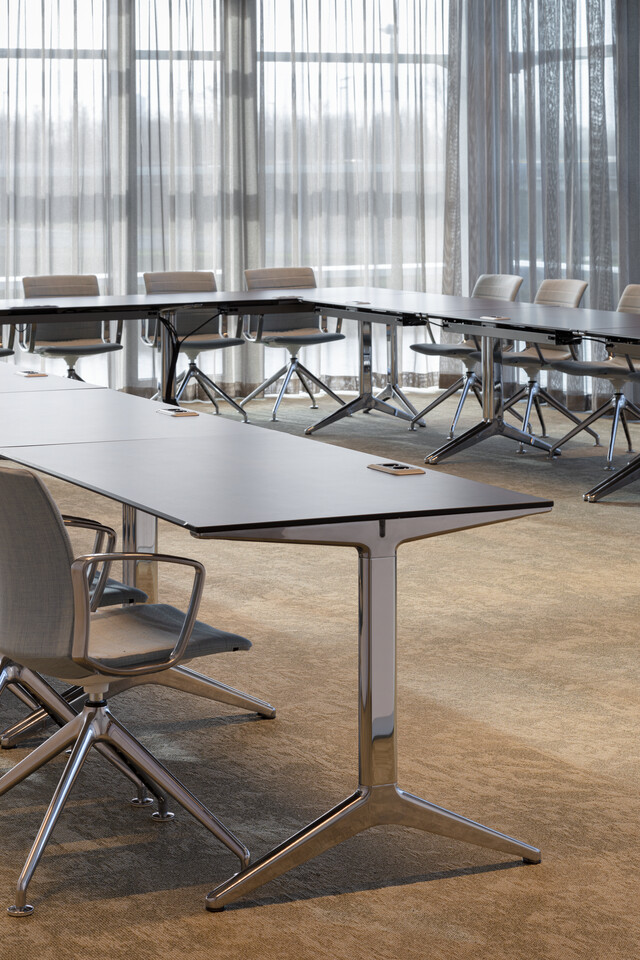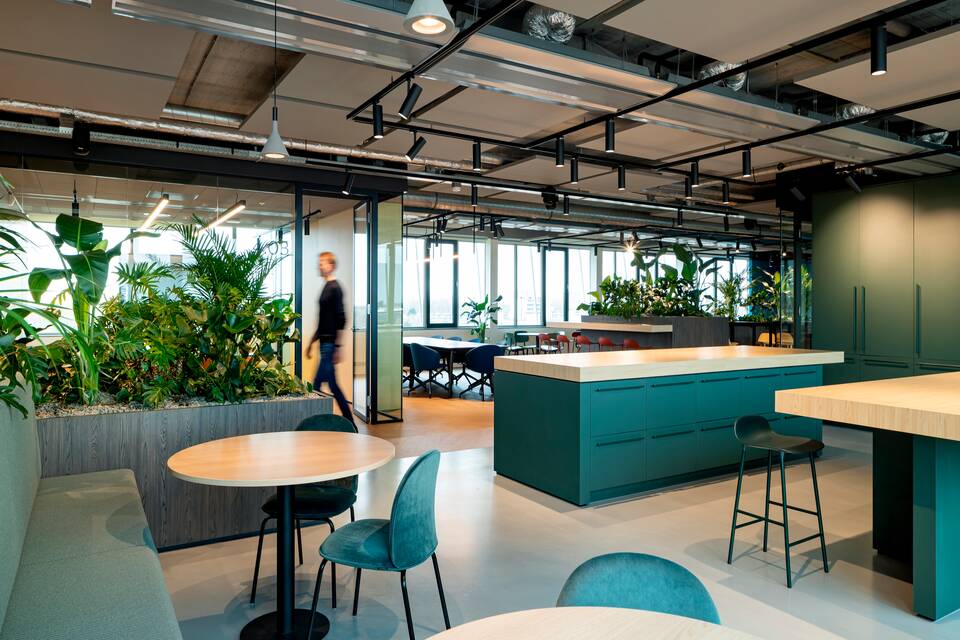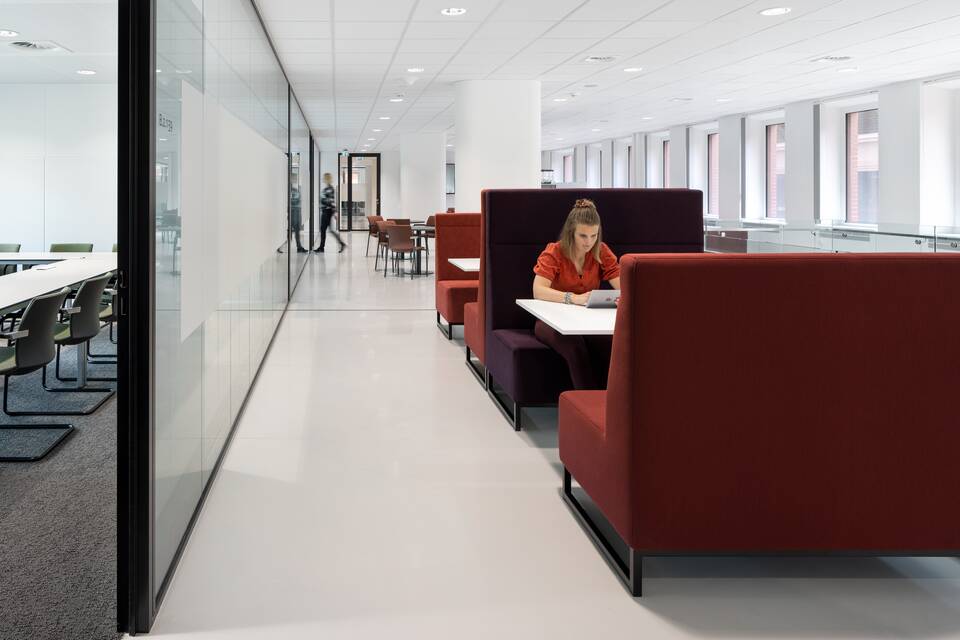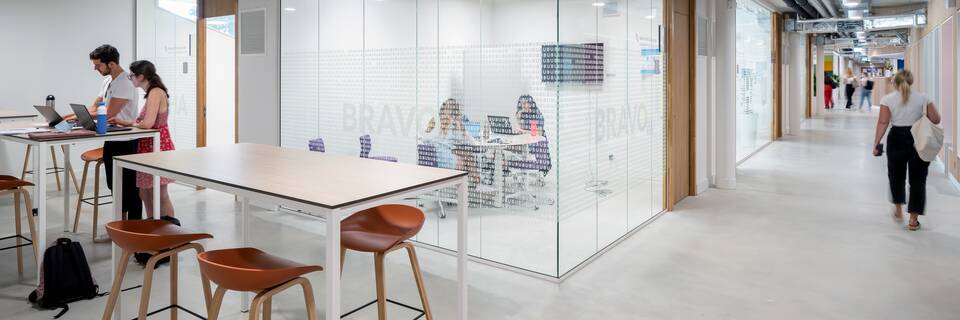
Maastricht University: Tapijnkazerne
This former barracks site in Maastricht has been given a new purpose: a city park with educational and hospitality facilities. LIAG Architects have transformed these barracks into a healthy and sustainable educational setting. Ahrend, along with the client and students, developed and designed the learning spaces, common rooms and meeting spaces through ‘design thinking’. ‘It’s great that Ahrend has expertise in the field of new forms of study and education. The result is plain to see: all of the spaces are constantly in use for the activities for which we designed them.’
Maastricht, The Netherlands
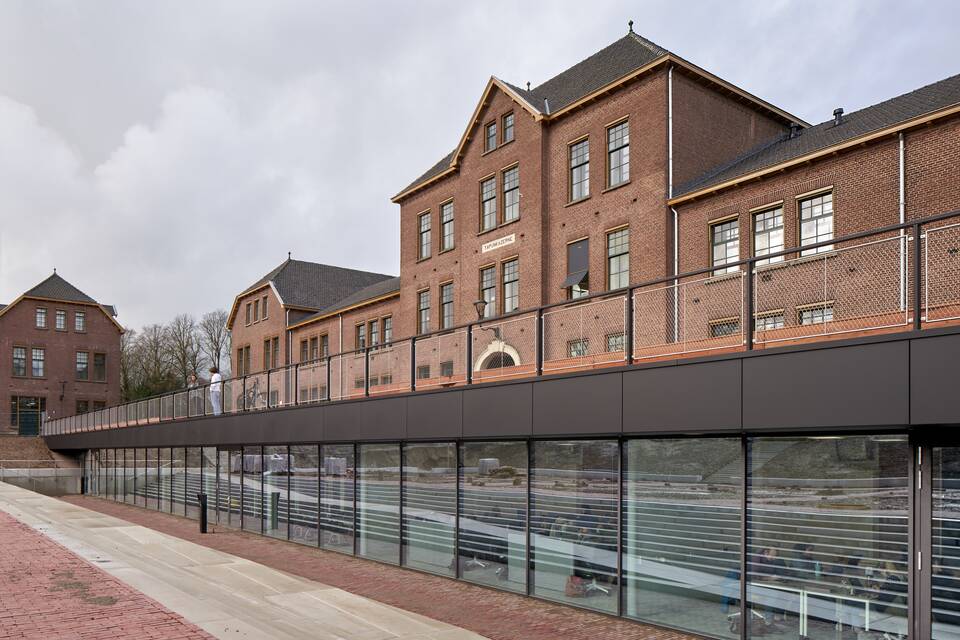
From library to learning spaces
Maastricht University is special in terms of Problem-Based Learning (PBL) and its internationally-oriented geographical location. The role that the city played in the founding of the EU has also made the university a leader in the field of multidisciplinary, European-focused research and study. This attracts a lot of students and researchers from the Netherlands and beyond. It’s no surprise, then, that the university was in need of more accommodation. The renovated Tapijn Barracks provides space for the university library, Problem-Based Learning and new learning spaces for students.
BREEAM-Excellent
With this project, the university strove for the BREEAM-Excellent certificate. Sustainability values such as health, energy, materials, waste, ecology and pollution are important factors for this certification mark. John Claessens, account manager at Ahrend: ‘For the furnishing, this meant high-quality materials and products to ensure that everything will remain sound and functional for years to come. Circularity is also important. Ahrend has responded well to this with folding tables (Ahrend 22) and chairs from the Well Collection. Everything is modular in design and assembled from recyclable components.’

‘Great that Ahrend has expertise in the field of new forms of studying and learning.’
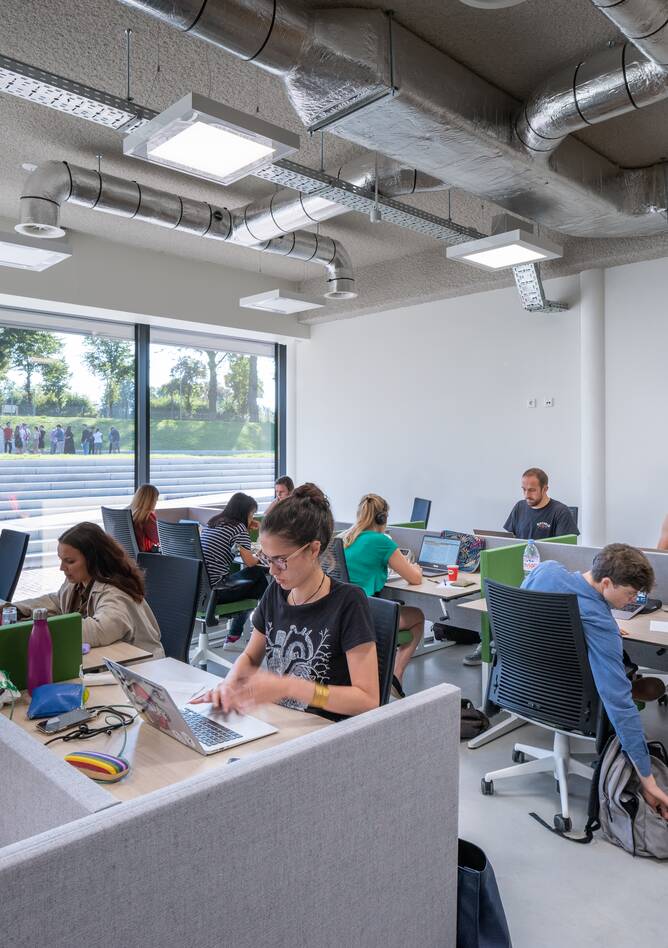

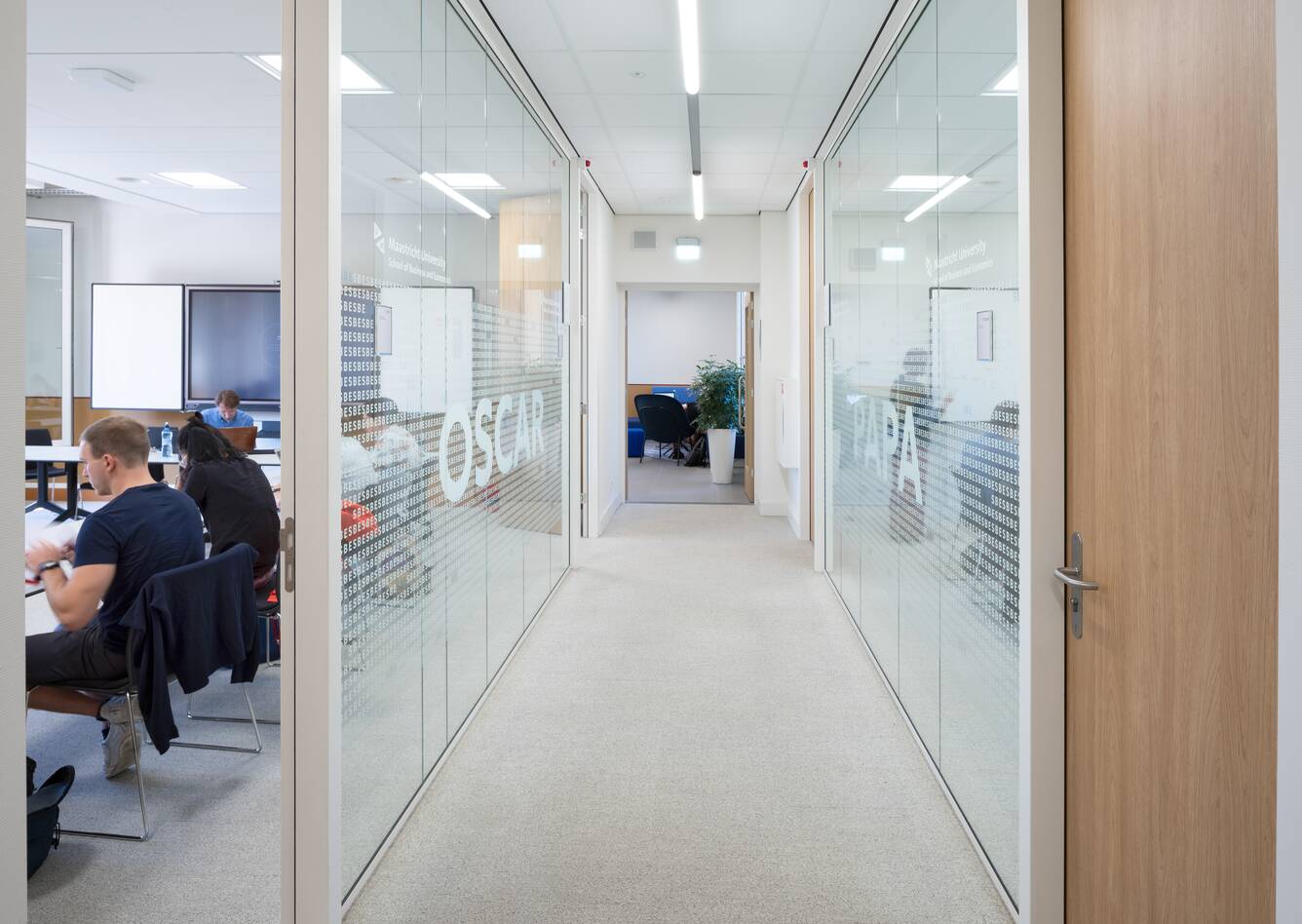


A vitalising work environment
As well as sustainability, the health and well-being of the students and staff is also important. This is the first project submitted by a European university to be awarded the WELL Building Silver standard. The comfort, well-being and health of the user were central to the brief. John: ‘Ahrend attended design thinking sessions with students and staff. This allowed us to make good use of our experience and expertise in the field of vital working. As a result, we were able to make a precise selection of suitable furniture for each role.’
Meeting and consultation
How was the furnishing received? Carin Klompen, Library, Locations and Services Manager of the Maastricht University Library, has observed that the learning space with our Well chairs and Ahrend 22 folding tables are seeing intensive use. ‘The common rooms (Ahrend Balance desks, Ahrend A2020 & Ahrend A314 chairs and Hay chairs) and meeting spaces (Ahrend Balance Scrum tables and Hay chairs) are also ideal for meetings and informal consultations.’
John: ‘Thanks to thorough preliminary research and the efforts of our specialist interior architect, this client knew the specific needs of the students and staff. If you can meet these needs as a furnisher, then 1 + 1 = 3.’


Living lab
This project excels in human-centric sustainability. The university even sees potential for the Tapijn Barracks as a living lab for sustainability research. Senior university lecturer and sustainable property expert Nils Kok is enthusiastic: ‘Our recent research into the effects of indoor climate on health and productivity clearly show that healthy buildings lead to better outcomes. Including well-being and health as an integral part of the development of the Tapijn Barracks underlines the importance of sustainability and health and puts our homegrown academic research directly into practice.’
The client on Ahrend
‘I’ve enjoyed working with Ahrend in the past. It was great that a permanent Ahrend designer was attached to this project. This person has expertise in the field of new learning and our Problem-Based Learning; the design meets the various requirements of studying, cooperating and meeting. When I walk around here I see that all the spaces and places are always occupied and used for the activities for which they were originally intended. This project is our pride and joy! In terms of environmental and human-centric sustainability, too.’
Carin Klompen, Library, Locations and Services Manager, Maastricht University Library

Also interesting
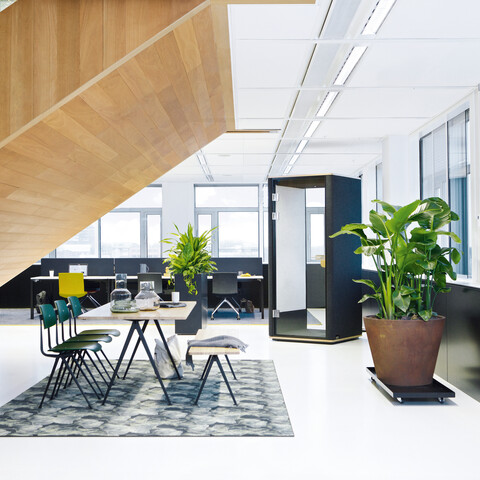
We would love to hear from you!
Do you have a question or would you like more information?
Don't hesitate to contact us